#Wildlife Habitat
Text
I made a new friend yesterday. This sweet Eastern Rat Snake watched me add bamboo supports to my bushes for 15 minutes, then came out to have a chat. I’m in love 😍
36 notes
·
View notes
Text
It might seem surprising that wildlife could thrive in the noise and lights of an airport. But some species, including threatened and endangered ones, manage to eke out a living on the fields between runways. Some airports are even deliberately creating wildlife habitat, while balancing the animals' needs with safety concerns. After all, it's no good for anyone when birds and planes collide.
I find this to be a poignant phenomenon. We've chewed up terrifying amounts of wildlife habitat worldwide, and species that need larger territories, are found in very small, rare habitats, or which are less tolerant of human activity, are losing ground rapidly. But it is heartening that even in a place as human-dominated as an airport there are still wild animals that manage to hang on.
This is not a reason to stop protecting and restoring better-quality habitat for these and more sensitive species. But we should keep accommodating those that can make use of those places, creating one more oasis amid massive habitat destruction.
#wildlife#animals#wild animals#airports#airplanes#habitat#wildlife habitat#habitat restoration#habitat destruction#endangered species#extinction#ecology#environment#environmentalism#conservation#nature#science#biodiversity#scicomm#science communication
79 notes
·
View notes
Text

The case for real
Every time I go out on a limb in praise of the real thing, I hear from people saying, "Yeah - but what about the poor sacrificial trees…? Shouldn't we be planting trees these days instead of cutting them down …?"
A fair point, I suppose, but a short-sighted one.
For one thing, Christmas tree farmers plant a lot more trees than they cut (two to one is the general ratio). In my one case, I've planted about 200 trees and I suspect at least half of them will stand long beyond their suitability as Christmas trees.
A story in Wednesday's tree-hugging New York Times makes the case for real trees:
"In these climatically perilous times, when the cooling and oxygenating properties of trees have never been more valued, it seems counterintuitive to support chopping them down. Yet, the ecological benefits of real Christmas trees are why many environmentalists endorse them over the fake, petroleum-based versions that are shipped from half a world away."
And while the trees are growing, they pull carbon from the air and provide habitat for animals, birds and insects, including wasps (a fact I learned the hard way).
11 notes
·
View notes
Text
Looking at the gaping expanse of bare ground left behind by the absence of the invasive vines in the side yard and seriously considering planting wild mint until I can get other native plants situated on that side of the house.
#adventures in home ownership#native gardening#rewilding#wildlife habitat#the only mint I will consider planting in the ground
13 notes
·
View notes
Photo
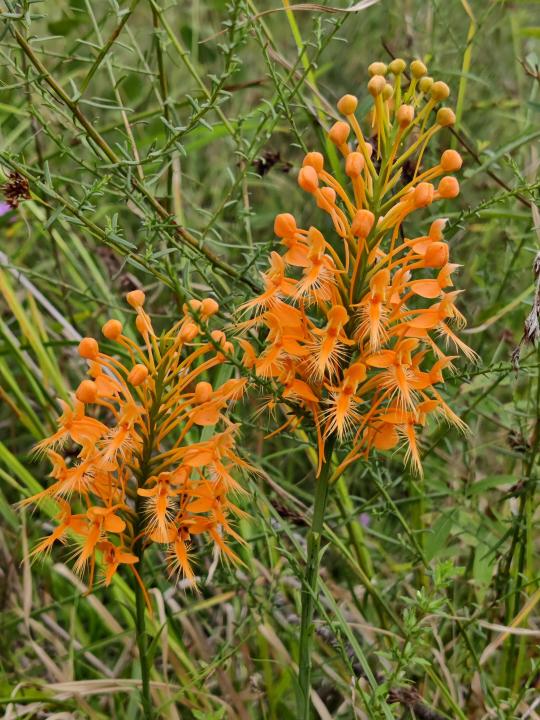
Check out the fiery beauty of the Platanthera ciliaris, a vibrant orange orchid adding a pop of color to the green wilds. These feathery blooms, native to the US, are a delightful find for nature enthusiasts and photographers alike!
#Platanthera ciliaris#orange orchid#vibrant flowers#nature photography#orchid species#wildflowers#floral beauty#nature enthusiasts#botanical#eco photography#US native plants#wildlife habitat#nature walks#orchid lovers#conservation
3 notes
·
View notes
Text
South Korea Is A Test Case On How To Fight An Ecological Disaster
After Two-thirds of the Country’s Tidal Flats Were Lost to Shoreline Development, South Korean Scientists Set Out to Prove Why This Ecosystem is so Essential.
— By Anna Jeanine Kim | Photographs: By Youngrea Kim | August 15, 2023

The sun sets over a tidal flat in Southwestern South Korea. Tidal Flats are a type of Ecosystem that Provide Habitat for Wildlife and help fight climate change—yet many are at risk of disappearing.
Yubudo, South Korea — As Byeongwoo Lee slowly walks across a sandy tidal flat on Yubudo, a small island off the west coast of South Korea, the birding guide does so quietly.
“You can’t see the birds right now,” Lee said. “You can feel them.”
Through the scope, it was just possible to make out their blurry shapes in the dark, and to hear the gentle but powerful “whhhrrr-reet-reet-reet” of tens of thousands of birds as they fed at the shoreline and in the shallow water.
As the sun rose, the tide retreated until it revealed six miles of the muddy sea floor. Channels of water like tree branches crisscrossed mud teeming with crabs, clams, snails, and sea worms.

Top: Depending on the time of day, tidal flats are either completely submerged under water or exposed to the air. Seen here at low tide, tidal channels criss cross an exposed tidal flat neighboring a residential neighborhood in Muan, South Korea.
Bottom: During an annual ceremony that takes place on the first full moon of the Lunar New Year, Gwangho Chu bows before a ceremonial table placed on a tidal flat in Wando, a small island in South Korea. Coastal communities in the Yellow Sea region have continued to honor the centuries-old tradition of celebrating the ancestral spirits of the sea and praying for a good harvest from the tidal flats.
Tidal flats like these are a type of wetland found on coastlines around the world. Korea’s Yellow Sea tidal flats, like those found on Yubudo Island, form the heart of an 18,000-mile route traveled by 50 million shorebirds as they migrate from eastern Russia and Alaska in the summer to Australia and New Zealand in the winter.
Many of them only stop once on their marathon journeys, and the tidal flats of South Korea provide them with essential food and shelter.
Yet despite their critical importance to the environment, many are at risk of disappearing. Some of the most important, and most endangered, are found surrounding the Yellow Sea along the shores of China and the western side of the Korean peninsula.
For decades, people have been transforming them into industrial sites and farms, squeezing them into smaller areas and pushing some species to the brink of extinction. But as science increasingly shows how wetlands like these benefit wildlife and help fight climate change, South Korean scientists and conservationists are gaining momentum in their effort to save and restore what’s left.

Top: From left, Okji Kim, Yangim Kim, and Sunim Bae work together to make gamtae-kimchi, a special type of kimchi made with sea algae instead of cabbage. With limited farmland available, coastal communities have traditionally relied on the abundance of tidal flats, developing a unique culinary culture over thousands of years.
Bottom: A seafood meal is served at a restaurant in Yamido, a small island now connected to the mainland by the construction of the 21-mile-long seawall built as part of the Saemangeum development project. Many of the residents living around the seawall used to make a living working in the seafood industry, but the destruction of nearby tidal flats significantly decreased their harvests, threatening their livelihood.
Why Tidal Flats Are An Environmental Powerhouse
“The tidal flats made the relationship between humans and the sea possible,” said Joon Kim, a senior researcher at the Jeonnam Research Institute who studies the culture around Korean tidal flats.
Since prehistory, South Korea’s coastal communities relied on tidal flats for harvesting clams, crabs, octopus, and seaweed, adjusting their way of life to the tide’s schedule. Their biodiversity and abundance inspired many beloved local cuisines, unique coastal culture, and a fishing economy worth over $330 million U.S. dollars a year.
These same ecosystems are now helping fight climate change.
South Korean universities are partnering with the government to study tidal flats and their ability to clean polluted water, protect shoreline communities from storms, and mitigate climate change by absorbing carbon dioxide.
Korean tidal flats are full of tiny one-celled organisms called benthic diatoms that sink through the mud as they complete their life cycle, burying carbon dioxide in the deep sediment, says Jong Seong Khim, a marine scientist and professor at Seoul National University.

Top: Seoul National University researcher Inok Lee hands a sediment sample to her colleague outside the Saemangeum seawall. Scientists like Lee are studying how the large-scale development project is harming water quality and marine wildlife.
Bottom: People ride recreational boats through a man-made canal at a city park in Songdo, South Korea. Once a thriving tidal flat ecosystem, Songdo was built on reclaimed land and hailed for creating "a city out of nothing." Over the past 70 years, South Korea has lost over two-thirds of its tidal flats due to reclamation projects like these.
The diversity and number of benthic diatoms make South Korean tidal flats unique, as does its thick mud—over 80 feet deep in some tidal flats.
In 2021, Khim and his fellow researchers published a study showing South Korea’s tidal flats and salt marshes absorb 260,000 tons of carbon dioxide annually, equivalent to taking about 110,000 cars off the road every year.
The same year, the South Korean government announced a four-year project to bring back tidal flats and salt marshes to help fight climate change.
Kim hopes that by showing how effectively tidal flats store carbon, governments and conservation groups will recognize them as valuable and save them from being destroyed.
Why Tidal Flats Are In Danger
In the past 70 years, South Korea has transformed from a country devastated by war into a highly developed, industrial nation. During this rapid change, two-thirds of its tidal flats subsequently disappeared.
In a country surrounded by the ocean on three sides, like South Korea, engineering solid, dry land over water-logged terrain, a process referred to as land reclamation, can expand territory or create more farmland.
Of all the threats to tidal flats—such as sea level rise and pollution—land reclamation has led to the most loss.
Scientists are only beginning to understand the true extent of this loss globally, but one recent study suggests 16 percent of the world’s tidal flats have disappeared in the past few decades.
“We are at a point where we should consider what we can do to give back to tidal flats,” said Kim.

Left: In 1989, a satellite image shows what the tidal flats around the Saemangeum development project looked like before construction began in earnest.
Right: By 2018, a satellite image of that same tidal flat reveals the effect of a 21-mile seawall and construction. The 100,000-acre reclamation project is seven times the size of Manhattan. ESA/NASA/USGS
One of the most controversial shoreline developments is Saemangeum, a 100,000-acre reclamation project seven times the size of Manhattan.
Developers first envisioned Saemangeum as a vast agricultural area for rice cultivation, then as the economy changed, they promised to turn it into an industrial corridor.
In 2006, despite lawsuits and protests, a 21-mile-long wall in Saemangeum deprived the ecosystem of the water it needed to exist. Just one part of the region’s transformation, it set the Guinness World Record for the world’s longest sea dam.
Millions of shellfish died when the wall severed the ecosystem from the tide.
Finding no food and no place to land, tens of thousands of migratory birds disappeared. About 90,000 now-endangered great knot birds died, driving their total population numbers down by at least 24 percent.

Top: The 21-mile-long Saemangeum seawall is is the longest such structure in the world. After its construction, tens of thousands of shorebirds disappeared from the area that used to be one of the most important habitats along the Yellow Sea region.
Bottom: As excavators work on tidal flat reclamation in Songdo, shorebirds rest during their annual migration from Australia to the Russian Far East. Developing tidal flats in this region destroys critical habitats for the 50 million migratory birds that fly this route every year.
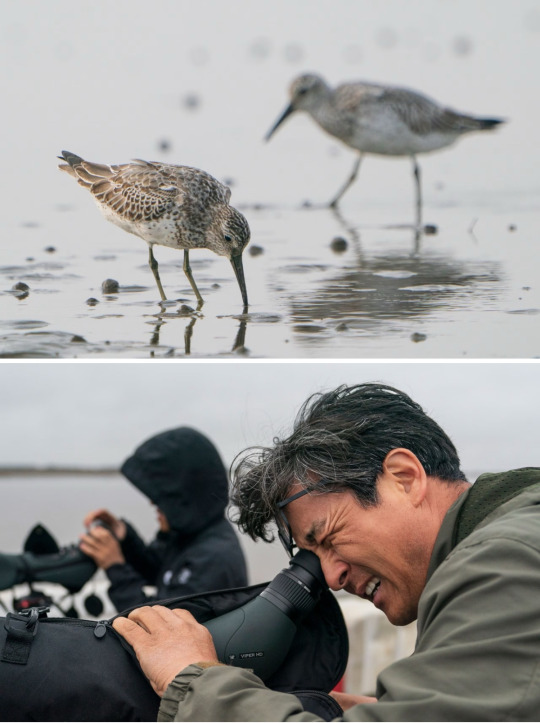
Top: Great knots feed on clams and seaworms at a tidal flat near Yubudo, a small island off the west coast of South Korea. About 80 percent of great knots have disappeared in the last two decades due to habitat loss.
Bottom: Dongpil Oh and his son, Seungjun Oh, conduct monthly surveys of shorebird populations on the the Sura tidal flat found in Gunsan, South Korea. Sura is one of the last remaining tidal flats found within the Saemangeum reclamation site. Dongpil and Seungjun are part of the Saemangeum Citizen Ecology Investigation Team, a grassroots organization that advocates for conservation and documents threats to tidal flats impacted by the Saemanguem.
It wasn’t only wildlife that suffered. Before the wall, the area was known for the nation’s best clams, with a fishing industry supporting around 20,000 people. Nearly all of that disappeared.
And yet despite promises of jobs made to the community, developers have completed less than half of the reclamation, and much of what has been reclaimed are undeveloped empty lots.
Saemangeum developers now plan to build an airport over the last remaining tidal flat, Sura, with construction scheduled to begin in 2024. Activists are suing to stop it, pointing out that the site still provides habitat for endangered species like black-faced spoonbills and Far Eastern curlews.
“It’s painful to remember how much it’s changed. Sometimes you forget how beautiful it was in the past because your eyes adjust to what it looks like now,” said Dongpil Oh, one of the activists involved and leader of the Saemangeum Citizen Ecological Investigation Team.

Left: Halophytes turn red on a tidal flat in Sinan, South Korea. South Korean researchers are studying how salt-tolerant plants like these can boost tidal flats’ ability to fight climate change by absorbing carbon.
Right: A blue-spotted mudskipper jumps during a mating dance at low tide in Sinan. Resting in its burrow at high tide and feeding in the mud when the tide goes out, the unusual, amphibious fish is adapted to the tidal flat’s drastic daily changes.
Bottom: The sun sets over Suncheon Bay Wetland Reserve at low tide. About 16 percent of the world's tidal flats have been destroyed in just the past few decades, but science is increasingly showing how important these ecosystems are for preserving wildlife and fighting climate change.


Top: National Institute of Ecology researchers and local volunteers tag baby black-faced spoonbills with GPS trackers in Incheon, South Korea. Around 90 percent of these endangered shorebirds breed on the country’s west coast. After their worldwide population dropped below 300 in the late 1980s, conservation efforts have brought their numbers to around 5,200. “As a top predator in tidal flats, their health can indicate the health of the overall ecosystem,” researcher Inki Kwon said.
Bottom: Ecotourist guide Sunjeong Heo points out a flock of birds over a tidal flat at Suncheon Bay Wetland Reserve in South Korea. Drawing over six million visitors a year, the UNESCO World Heritage site is a blueprint for the country’s tidal flat conservation and ecotourism.
A New Era of Conservation
After 30 years of construction, Saemangeum has become synonymous with ecological collapse, but it also sparked an environmental movement in South Korea after people witnessed what happens when tidal flats are lost.
Two years after the Saemangeum seawall was finished, in 2008, the South Korean government banned new large-scale reclamation projects—though developments already in progress, like Saemangeum, are still permitted.
And in 2019, reclamation of tidal flats finally plateaued in South Korea, when the net gain from restoration barely surpassed the loss, according to a 2023 report from the International Union for Conservation of Nature.
One of the best places to see the benefit of this kind of conservation is South Korea’s Suncheon Bay Wetland Reserve, on the peninsula's southern edge. The wetland was spared from the threat of development in the ‘90s, when residents and activists protested the government’s plan to mine the land.
Suncheon Bay became the country’s first internationally protected coastal wetland, and its tidal flats were designated a UNESCO World Heritage site in 2021, along with four other tidal flats in South Korea. Every year, over six million tourists visit the wetland and the nearby National Garden to see wildlife like hooded cranes and blue-spotted mud skippers.
With municipal and national funds, the Suncheon Bay Wetland Reserve bought nearby farmland by the coast, restoring the connection with the sea.
Their holistic approach to restoration has introduced organic rice farming to reduce pollution from runoff and educational opportunities for ecotourists, residents, and children in local schools. Suncheon’s success is a blueprint for tidal flat conservation around the world.
“Our focus is on letting the tide flow again, like it always did,” said Sunmi Hwang, a conservationist with the wetland reserve. “And then nature heals itself.”
#Environment#South Korea 🇰🇷#Ecological Disaster#Tidal Flats#Shoreline#South Korean Scientists#Ecosystem#Anna Jeanine Kim#National Geographic#Wildlife Habitat
3 notes
·
View notes
Text
It’s harder than it should be to find good info about how to restore degraded habitat 😔 Im thinking about starting a personal restoration project on an area of land behind my house and I want to do it right! But I’m having trouble finding… anything. Will update
2 notes
·
View notes
Text
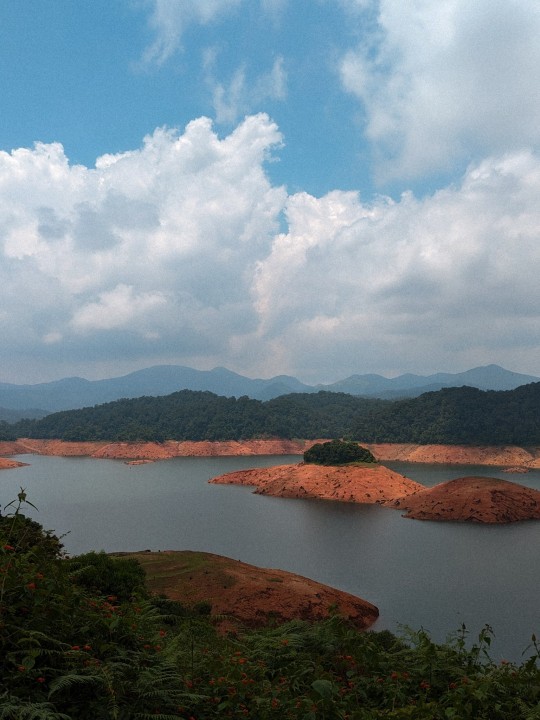
#valley#nature#sky#hiking#wildlife habitat#tumblr#photography#greens#soil#mountains#nature photography
9 notes
·
View notes
Photo
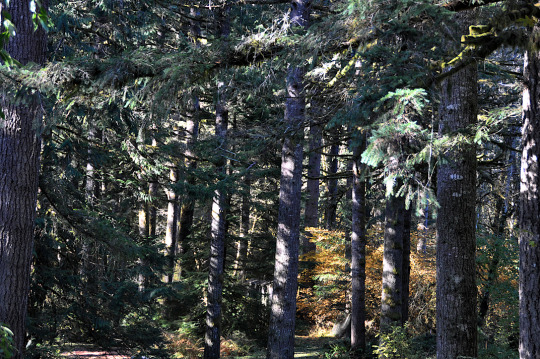
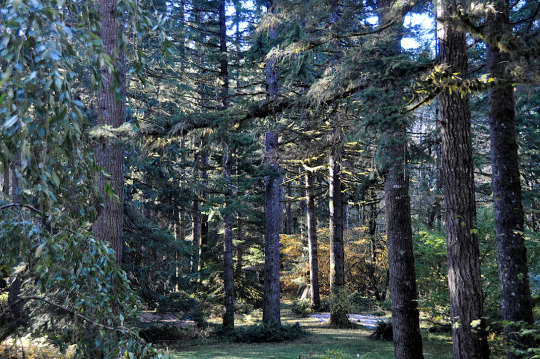
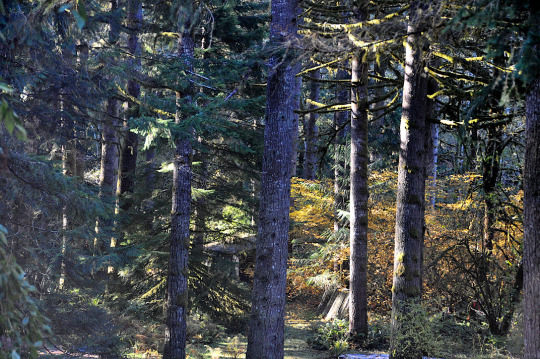
Three days of sunlight down at the barn.
If you look closely you will see what looks like tarps on the ground... and you would be right. We have invasive species trying to enter our woods, and we are taking steps to eradicate them. The tarps are to kill off the shining geranium, which is beautiful, but not native to our woods and quite harmful to our native species. We are working with our local Watershed Council to return the woods to prime wildlife habitat.
#down by the barn#the barn in the woods#the woods#sunlight#autumn#photozoi#orig photos#11-2022#sunny and COLD#invasive species#tarps#wildlife habitat#shining geranium#the battle is ON
21 notes
·
View notes
Text
Join me in fighting for the environment. The polluters have to face time in court if things are going to change.
#biodiversity#wildlife habitat#ecology#ecosystems#environment#wildlife#wild birds#birds nature#wolves
2 notes
·
View notes
Text

Long dry spell forecast (3 weeks already!) so possibly the last mowing of guest lawn and access paths for a while
3 notes
·
View notes
Text
youtube
0 notes
Text
You have NO IDEA HOW HAPPY THIS MAKES ME!!!!!! Willapa NWR is my "home refuge", so to speak. I've volunteered there for hours, spent a ton of time walking the trails, and it is incredibly dear to me. They're already protecting and restoring thousands of acres of land, from tidal wetlands to old-growth forests to dune habitat and more. This funding approval means that Willapa NWR will receive $1,255,248 to acquire 239 acres of land for the purpose of preserving waterfowl and other wildlife habitat.
Habitat loss is THE single biggest cause of species endangerment and extinction, so the more we're able to protect, the better--especially if we can create wildlife corridors between sections. Biodiverse ecosystems also have a better chance of weathering the effects of climate change.
Along with the habitat acquired for Willapa NWR, funding was also approved to purchase land for other Refuges:
Cat Island National Wildlife Refuge in Louisiana – $1,466,000 to acquire 548 acres.
Clarks River National Wildlife Refuge in Kentucky – $6,621,000 to acquire 2,482 acres.
Green River National Wildlife Refuge in Kentucky – $11,372,000 to acquire 1,335 acres.
Silvio O. Conte National Fish and Wildlife Refuge in New Hampshire – $1,066,450 to acquire 797 acres.
The funding was acquired through the sales of Federal Duck Stamps; 98% of the money from these stamps goes into purchasing and maintaining Refuge lands. While these were originally created to raise funds for waterfowl land by requiring waterfowl hunters to buy a stamp with their license each year, anyone can buy a Duck Stamp. There are lots of non-hunting collectors who buy them for the art, and the annual art contest draws talent from across the country. The Junior Duck Stamp Program allows young artists K-12 to enter their own contest while also learning about conservation. (It also was the topic of one of my more infamous posts here on Tumblr!)
#conservation#environment#environmentalism#Willapa National Wildlife Refuge#National Wildlife refuge#wildlife refuge#wildlife habitat#wildlife corridors#wildlife#animals#nature#climate change#biodiversity#endangered species#extinction#Washington#Washington State#PNW#Pacific Northwest
146 notes
·
View notes
Text
How does one get an Ili Pika to pose for a social media influencer photoshoot?
In the vast and rugged landscape of the Tianshan Mountains in China, a tiny creature roams amidst the rocky terrain—the Ili Pika (Ochotona iliensis). Often referred to as the “magic rabbit” or “stone rabbit,” the Ili Pika is a rare and elusive species that captivates the hearts of all who encounter it. In this article, we embark on a whimsical journey to explore how one might entice an Ili Pika…
#animal welfare#biodiversity conservation#conservation awareness#conservation efforts#conservation messaging#endangered species#endangered wildlife#environmental advocacy#ethical photography#ethical wildlife photography#habitat preservation#Ili Pika#Ili Pika conservation#nature photography#social media influencer#Tianshan Mountains#wildlife advocacy#wildlife conservation#wildlife conservation photography#wildlife education#wildlife habitat#wildlife photography#wildlife preservation#wildlife protection
0 notes
Text
Mow the Grass?
When your grass starts getting high, don’t think, “I need to mow the grass.”
When your grass starts getting high, don’t think, “I need to mow the grass.”Instead, think, “My bio-diverse natural wildlife habitat is doing nicely.”
Please give some thought to leaving at least part of your yard in its natural state with no mowing or application of chemicals. This is especially important if you live in an urban area. The insect population is collapsing, in part because we have…
0 notes
